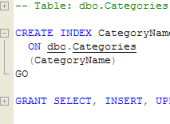MS SQL Maestro online Help
| Prev | Return to chapter overview | Next |
Create Asymmetric Key Wizard
Create Asymmetric Key Wizard guides you through the process of creating a new asymmetric key. See How To Create asymmetric key for instructions on running this wizard.
The basic principles of Create Object Wizards in MS SQL Maestro are explained in a separate topic. Below you will find a description of wizard steps that are unique for the current object.
To add a new asymmetric key, specify the following options.
Owner
Specify the owner for the new asymmetric key. By default, only the owner of an object can perform various operations with the object. In order to allow other users to operate it, privileges must be granted. (However, users that have the superuser attribute can always access any object.)
Source Type
Defines the asymmetric key source type.
Source
If File or Executable File source type is selected, use this field to specify the path to the strong-name file from which the key pair is to be loaded or the assembly file from which the public key is to be loaded.
Assembly
If Assembly source type is selected, use this field to specify the name of the assembly from which the public key is to be loaded. The assembly must have been already created in the database.
Algorithm
If Generate New source type is selected, you should specify an encryption algorithm in this field.
Use Master Key
If checked, the private key will be encrypted with the database master key. Otherwise you have to specify password with which the private key will be encrypted.
Password
Specifies the password the private key is to be encrypted with.
See also: Asymmetric Key Editor
| Prev | Return to chapter overview | Next |





 Download
Download Buy
Buy
